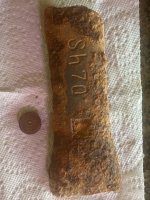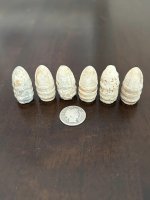Nick A
Hero Member
- May 10, 2007
- 657
- 153
- Detector(s) used
- Minelab Explorer SE Pro, Minelab E-Trac, Fisher CZ3D
I am curious as to why dug indian heads and early wheats come out of the ground with such nice green patina. It's too much for me to believe this is just chance that coins after the mid-1920's do not exhibit this patination.
I believe the answer lies in the "5% tin and zinc" content of bronze cents. I cannot find a reference to the specific percentages of zinc and tin used. Sometime in the early 1920s, the percentage of zinc must have been increased and tin decreased. I can find no reference to this change, but I would be very interested in finding one.
Tin is a key element in bronze. The properties of tin state that it is not easily oxidized, prevents corrosion, resists corrosion from water, but can be attacked by acids, alkalis and acid salts. These are exactly the properties that would make the early cents better preserved than the later ones.
Anyone who has dug an eaten up modern penny knows how zinc weathers in the ground. So, this also indicates that an increase in zinc would make the surfaces more easily corroded.
Thoughts? Evidence?
I believe the answer lies in the "5% tin and zinc" content of bronze cents. I cannot find a reference to the specific percentages of zinc and tin used. Sometime in the early 1920s, the percentage of zinc must have been increased and tin decreased. I can find no reference to this change, but I would be very interested in finding one.
Tin is a key element in bronze. The properties of tin state that it is not easily oxidized, prevents corrosion, resists corrosion from water, but can be attacked by acids, alkalis and acid salts. These are exactly the properties that would make the early cents better preserved than the later ones.
Anyone who has dug an eaten up modern penny knows how zinc weathers in the ground. So, this also indicates that an increase in zinc would make the surfaces more easily corroded.
Thoughts? Evidence?






